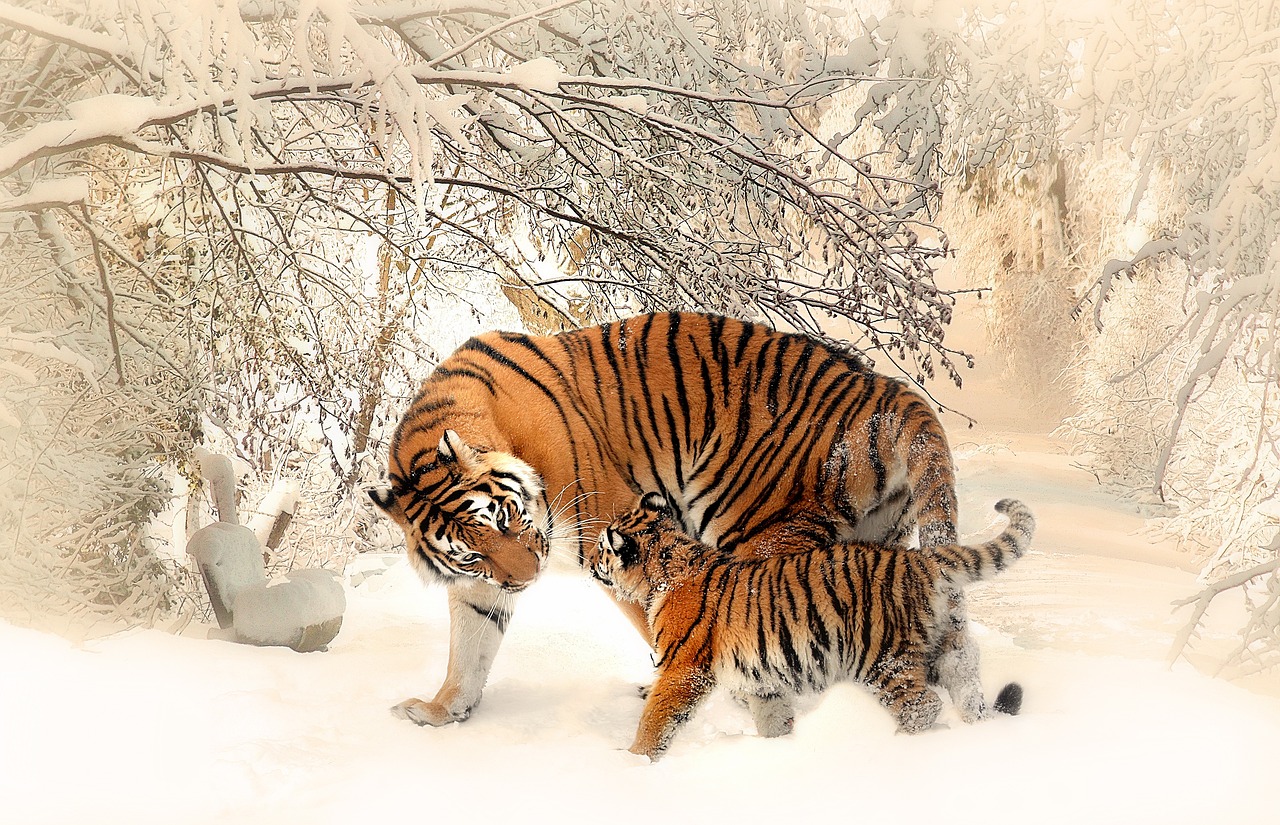Wildlife conservation is a crucial aspect of maintaining the earth’s biodiversity. With the global extinction rate rising, it has become increasingly important to monitor wildlife to ensure their survival. Artificial intelligence (AI) has emerged as a promising tool to enhance conservation efforts. By incorporating machine learning algorithms, AI can help researchers identify, monitor, and learn about species in a more efficient and precise manner. This article delves into the ways AI is altering the landscape of wildlife conservation.
Harnessing AI to Identify and Monitor Species
Just as humans can recognize their friends by their faces, AI uses similar principles to identify animals. By training machine learning algorithms using a vast amount of data, AI can accurately identify different animal species based on their unique patterns, shapes, and colors. This technology has been used to identify animals ranging from zebras to whales, allowing for efficient monitoring on a scale previously unimaginable.
A lire aussi : How can i get mental well-being advice in images with MyImageGPT ?
Automated species detection is another significant application of AI in wildlife conservation. Conventionally, researchers had to invest an inordinate amount of time manually identifying and counting animals in images or videos. AI now enables automated detection of animals in images, significantly reducing the time needed for the task and allowing researchers to focus on other important aspects of conservation.
Additionally, AI can monitor movements and behaviors of animals, providing valuable data to researchers. This technology allows for real-time monitoring, alerting researchers to any significant changes in animal behavior or population that may indicate a problem.
A lire en complément : How can quantum computing impact drug delivery systems?
The Role of AI in Data Analysis
Conservation efforts generate massive amounts of data, from animal population counts, to migration patterns, to changes in the environment. Previously, the analysis of this data was a time-consuming and complex process. However, AI has vastly improved the efficiency and accuracy of data analysis in wildlife conservation.
For instance, AI can predict future trends by analyzing past data, modeling and forecasting potential changes in animal populations or their habitats. This helps conservationists plan for the future, taking proactive measures against potential threats. Furthermore, machine learning algorithms are used to analyze complex ecosystem interactions, providing insights that would be hard to obtain otherwise.
AI and Drone Technology for Wildlife Conservation
Drone technology, combined with AI, has introduced a revolutionary approach to wildlife conservation. Drones equipped with high-resolution cameras and advanced AI software offer a bird’s eye view of wildlife and their habitats, providing researchers with a wealth of information.
Through the use of machine learning algorithms, these drones can identify and count animals, detect illegal activities like poaching, monitor habitat changes, and track animal movements. This technology provides real-time, high-resolution data, making wildlife monitoring more efficient and effective.
How AI Enhances Anti-Poaching Efforts
Poaching poses a significant threat to wildlife conservation. The illegal hunting, capturing, and trading of wildlife has led to the decline of many species. AI is being used to combat this issue, enhancing anti-poaching efforts significantly.
AI technology can analyze patterns in poaching activities, predicting potential hotspots and enabling authorities to pre-emptively intervene. Additionally, AI-based facial recognition software can identify known poachers, helping in their capture and prosecution.
Moreover, AI is used in smart collars that are fitted onto targeted animals. These collars alert authorities when unusual movements are detected, potentially indicating a poaching event. This use of AI aids in the timely detection and prevention of poaching incidents.
AI in Predictive Modeling for Conservation Efforts
Predictive modeling is a powerful tool in wildlife conservation, and AI has significantly enhanced its capabilities. AI algorithms are used to analyze data and predict future outcomes, aiding conservationists in making informed decisions.
For example, AI can predict how climate change will affect specific species, providing insights into which animals are most at risk and why. This information can guide proactive conservation efforts, minimizing potential impacts before they occur.
Similarly, AI can simulate the impact of human activities, such as urban development or logging, on wildlife populations and habitats. This predictive modeling can guide policy-making, helping to ensure that economic development does not come at the expense of biodiversity.
While the applications of AI in wildlife conservation are immense, it is important to remember that technology is just a tool. The commitment and dedication of conservationists, researchers, and the general public are what will ultimately determine the success of wildlife conservation efforts. AI simply provides a powerful means to enhance these efforts, helping us protect and preserve the world’s precious biodiversity.
The Role of AI in Monitoring Endangered Species
In recent years, a major focus of wildlife conservation has been on monitoring endangered species. With the help of AI, this task has become more manageable and efficient. Machine learning algorithms are being used to analyze images captured by camera traps, identifying different species, and providing information about their numbers and behaviors.
AI is also aiding the tracking and monitoring of endangered species in real-time. By equipping animals with GPS collars that collect and transmit data, researchers can trace their movements and understand their behaviors better. This data is then analyzed using AI to identify any alarming changes or patterns.
In addition to tracking animal movements, AI can also be used to monitor their health. Facial recognition software can identify individual animals and track their health over time, allowing researchers to detect and respond to any changes quickly.
Moreover, AI can help in identifying suitable habitats for endangered species. By analyzing satellite imagery and other geographical data, AI can identify regions that are suitable for certain species’ survival and growth. This information is critical in planning conservation strategies and in making decisions about habitat protection and restoration.
While AI provides invaluable assistance in monitoring endangered species, it is important to remember that these efforts need to be backed by strong legal measures and public support. Technology can only aid in the process, but the actual change comes from human actions.
AI in Combatting Wildlife Trade and Human-Wildlife Conflict
Illegal wildlife trade poses a significant threat to many species worldwide. AI is playing a crucial role in combatting this issue. By analyzing patterns in illegal trade activities, AI can predict potential hotspots and help authorities intervene preemptively. International conferences on wildlife conservation are increasingly discussing the role and potential of AI in curbing wildlife crime.
Furthermore, AI has the potential to play a significant role in resolving human-wildlife conflict – a growing issue as human settlements encroach on wildlife habitats. By analyzing patterns and predicting potential conflict areas, AI can help in devising strategies to prevent such conflicts.
Computer vision, a field of AI, is being used to analyze amounts of data from camera traps and satellite imagery to identify areas of potential human-wildlife conflict. By identifying these areas in advance, steps can be taken to prevent conflicts from occurring, protecting both people and wildlife.
While AI can provide valuable tools and insights, it is ultimately the actions of people that will determine the success of these efforts. Technology can, and should, assist in conservation efforts, but it cannot replace the need for human compassion, respect, and commitment to preserving the world’s wildlife.
Conclusion
It is clear that artificial intelligence is making significant strides in the realm of wildlife conservation. Whether it’s species identification, predictive modeling, anti-poaching efforts, or resolving human-wildlife conflict, the use of AI can enhance our ability to protect and preserve our planet’s biodiversity.
The real-time, high-resolution data generated by AI-powered devices, such as drones or camera traps, allows researchers and conservationists to make informed decisions and implement proactive conservation strategies. This is a game-changer in the field, giving us hope for the future of wildlife conservation.
Nonetheless, the power of AI must be matched by human will and effort. We must remember that AI is a tool that exists to augment our abilities, not replace them. The fight for wildlife conservation is a collective effort that requires the commitment and dedication of researchers, policymakers, and the general public. As we continue to innovate and find new uses for AI in this field, we must also redouble our commitment to preserving our planet’s rich and diverse wildlife. The future of wildlife conservation is a blend of technology and human effort, working in synergy.
















